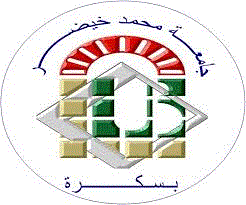| Titre : | Biologie de la reproduction d’une population captive de la Perdrix Gambra (Alectoris barbara L) et dynamique des populations des milieux prés forestiers et présahariens en Algérie |
| Auteurs : | Farid Mezerdi, Directeur de thèse ; Mohamed Belhamra, Auteur |
| Support: | Thése doctorat |
| Editeur : | Biskra [Algerie] : Université Mohamed Khider, 2015 |
| Langues: | Français |
| Mots-clés: | Biologie, Perdrix gambra, lignée de repeuplement, génétique. Barbary Partridge, game, hunting, population, Zeralda, Djelfa, Forest meadows, preSaharan, Gompertz,release, reserve, density. |
| Résumé : |
Les populations reproductrices concernent la forme nominale Perdrix gambra (Aléctoris Barbara) qui occupent principalement la partie paléarctique sud entre les latitudes de 36° N et de 34°N, s’étendant à l’ensemble de l’Afrique du Nord et limité au sud par l’atlas saharien. En 1980, ses populations ont connu un fort déclin du fait d’une chasse et surtout d’un braconnage intensifs. Les prélèvements annuels déclarés et les dates d’ouvertures et de fermetures de la chasse ne tenaient pas compte des particularités propres aux populations à l’échelle locale et régionale. En plus, dans les textes législatifs, l’arrête ne tient pas de sous–espèce, qui sont rares et fragiles. Dans les pays du Maghreb (Algérie Maroc et Tunisie), le dérangement par les mammifères domestiques errants et l’homme, et les pratiques agricoles constituent aujourd’hui des facteurs limitant le sucées de la reproduction. Mais le danger le plus grave est la pollution génétique induite par les lâchers accidentels de perdrix choukar au niveau du Djurdjura. En Algérie pas moins de 300 000 perdrix sont tuées annuellement. Cette étude consiste à poursuivre la sélection d’une lignée de repeuplement F11 à F14 de qualité génétique et sanitaire. Suivre les indicateurs de cette population Cerner les contours biodémographiques des populations durant trois années successives par la méthode de recensement des mâles chanteurs dans des milieux prés forestiers et présahariens.
The study on Barbary Partridge (Alectoris barbara, Bonnaterre, 1792) aims to strengthen and develop basic and applied knowledge. The methodological approach is based on several complementary components, whose confrontation debouch the measurement of growth traits and population dynamics in forest meadows and pre-Saharan environments in Algeria. Two way selection has involved three generations N = 540 adults and young chicks n = 4346. Indicators of controlled breeding show that the level of fertility remains approximately constant at an average rate of 82.27% for the duration of the reproduction stage -incubation. The research component of speed tracking growth characters Weight, Tarsus and folded wing, in two lines Fast and Slow for 3 successive generations concerned sampling a cycle ti = 13 weeks on an effort to 8946 measures and a total sample of N = 213 birds. Adjustments growth curves estimated through the Gompertz model, showed that on the first day of the birth weight, the wing folded and the tarsus are significantly in favor of fast line. We confirmed this prediction by analysis of variance «ANOVA test» measured characteristics is significantly higher than in the line FL with respect to the Slow line. We have demonstrated that the secondary sexual character "pin" in development for the entire duration of the experiment becomes apparent significantly from the 140 days of age. The field research component shows that the population structure remained fairly stable at the forest meadows area of Zeralda with an average density of 11.72 pairs / 100ha. This is not the case of presaharan populations of the area of Djelfa or density significantly fluctuates depending on rainfall. We noted in the two stations, for a dry year, it is between 4,61 to 8 pairs / 100ha. For a watered season it varies between 4,94 to 14,4 pairs / 100 ha. In addition to weight factors of predation and poaching. The two complementary components of our research that the selection scheme and has proven effective: the two divergent lines significantly. Genetic factors are significantly responsible for the fast growth or slow. The physical, physiological and behavioral requirements specific to this group of birds were optimized. During our field research, we have demonstrated that natural populations function as biological system and have resilience. In addition, there are alternatives for strengthening Partridge Barbary through breeding bird releases from a rigorous selection all by establishing an indicative sampling plan. |
Exemplaires (2)
| Cote | Support | Localisation | Disponibilité | Emplacement |
|---|---|---|---|---|
| TH/00000 | Thèse doctorat | Bibliothèque centrale El Allia | Exclu du prêt | Salle de consultation |
| TH/00000 | Thèse doctorat | Bibliothèque centrale El Allia | Exclu du prêt | Salle de consultation |
Consulter en ligne (1)
Consulter en ligne URL |



